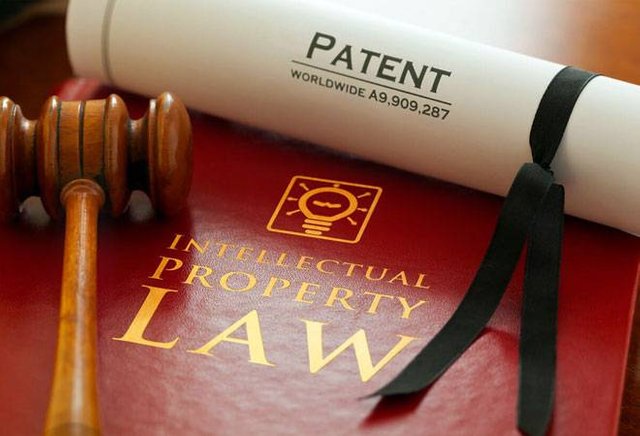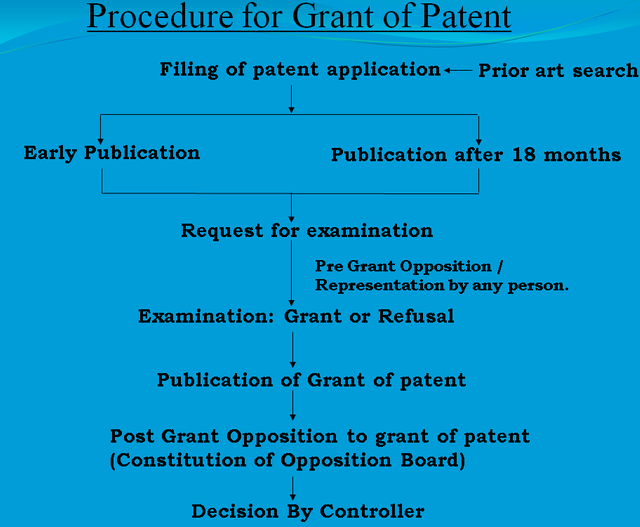
PATENTS AS AN INTELLECTUAL PROPERTY
Inventions are protected by patents an invention may be a product or a process that gives a replacement way of doing. A patent may be a set of exclusive rights granted by to an inventor or assignee for a limited period of your time in exchange for detailed public disclosure of an invention.
An invention may be a solution to a selected technological problem and may be a product or a process. Protection is granted for a limited period i.e. 20 years, after 20 years it enters into public domain. Patent protection means that the invention cannot be commercially use or made or sold or distribute without patent owner's permission. The patent owner may give permission to or license other parties to use the invention on mutually agreed term. The owner can also sell the proper to the invention to somebody else who will then become the new owner of the patent. Once patent expires, the protection ends then an invention enters into public domain.
Conditions of Patentability for an invention to be patentable it must be:
- A new product or process
The element of newness or novelty will depend upon the state of prior art. In other words, if a particular invention has already been published or used or is a part of the existing knowledge, it will not consider as a novel. - Non-obvious
The invention must be non-obvious to a person skilled in the art to which invention relates. - Useful and capable of industrial application.
The invention must be of beneficial use to mankind. An invention will not be patentable if it is new and non-obvious but it is not useful.
Non-patentable Inventions
Despite of certain inventions satisfying the foregoing conditions of patentability, they cannot be patented.
• Those inventions which are injurious to public health or violate. public morality or public interest or which causes serious prejudice to human, animal or flowers or health or to the environment.
• New method of agriculture or horticulture is non-patentable invention in order to have a more 'Widespread benefit of such invention in the hands of the inventor alone.
• A process of treatment of citizenry, animals or plants.
• The mere discovery of latest sort of a known substance.
• Any process for the medicinal, surgical, curative, prophylactic, diagnostic or other medical treatment of person or animals to render them disease free or to extend their value or their products.
• Literary, dramatic or artistic work or any other cinematographic work.
• Presentation information.
• An invention which, in effect, is a traditional knowledge or which is duplication of known component.
• Mathematical or business method or a computer virus or algorithms aren't patentable.
• Inventions associated with nuclear energy aren't patentable.
Procedure of Obtaining Patent

In order to obtain patent, you must apply to patent office and consist of the following steps:
Submission of application.
Publication arid examination of the application.
Opposition to grant of patent.
Granting of patent.
Submission of Application
A patent application can be made by the true and first inventor of the invention or his assignee or a legal representative of a deceased person. The application procedure is predicated on the primary to use system. The person who applies first gets the patent. In case, an inventor is the first to invent but applies for a patent later, any time after another inventor has made the application the first inventor will not get patent. The patent application must be accompanied by a provisional specification.Formally Examination
An application document submitted will be checked to see whether it fulfills the necessary procedural and forma requirements. An invitation to correct will be made where necessary documents ~re missing or required sections have not been filled in.Request for Examination
Patent application is not necessarily examined. An examination will be carried out for which the application or third party has filed a request for examination and paid the examination fees.Substantive Examination
An examination is going to be administered by an examiner, who are going to be decided whether or not the claimed invention should be patented the examiner firstly checks whether the appliance fulfils requirement prescribed by law.Decision to Grant Patent
As a result of the examination the examiner will make a decision to grant a patent as a final assessment of the examination stage if no reasons for refusal have been found. The examiner also will make an equivalent decision of the explanations for refusal has been eliminated by an argument or amendment.Notification of Reasons for Refusal
The patent office will publish the content of an application in the official 'gazette after 10 months have clapped from the date of filing.Deemed Withdrawal
Any application that an invitation for examination has not been filed within a period of three years from filing date will automatically be considered withdrawal and can't patented.Notification of Reasons for Refusal
If the examiner finds reasons for refusal, a notification to this result will be sent to the application.Decision of Refusal
If the examiner judges that the reasons for refusal have not been eliminated, a decision of refusal will be made.Appeal against the Decision of Refusal
When dissatisfaction is within the decision of refusal of the examiner the applicant may appeal against the choice of refusal.Registration
Provided that the applicant pays the patent fee, once the decision to grant patent has been made the patent right will come into effect as it is entered in the patent register.Intellectual Property High Court
An applicant who is dissatisfied with appeal decision of refusal and an interested party, who is dissatisfied with an appeal decision of invalidation or maintenance, may appeal to the intellectual property high court.